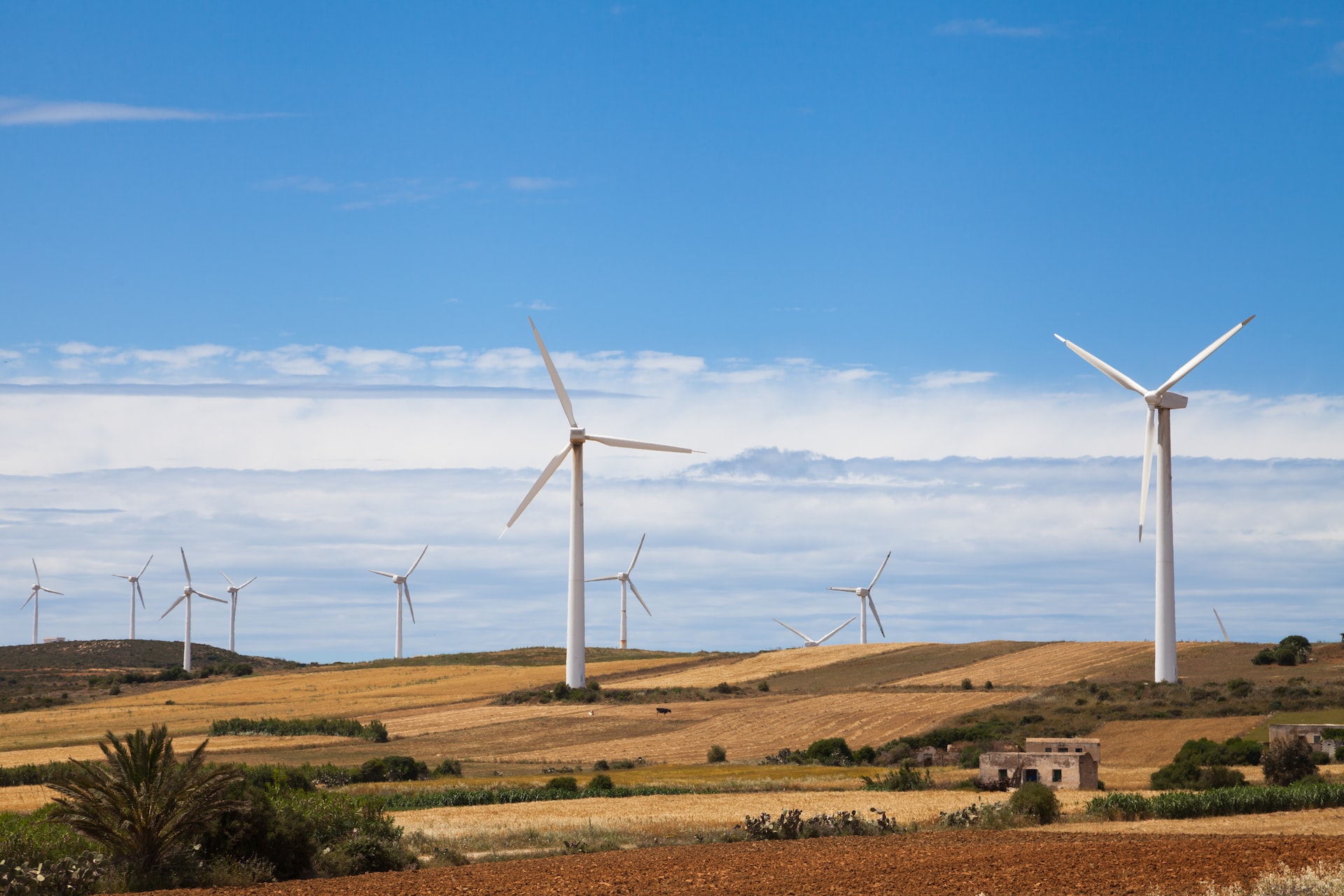Scroll down to see these clear, simple mitigation breakthrough goals defined for ~30 major sectors in the economy
What is a breakthrough? The Breakthrough Agenda – a political processA “breakthrough” is a moment that marks a significant advance in the transformation of an economic sector or natural system. A breakthrough can represent a critical new level of infrastructure or technology deployment, reduction in production cost, improved health of a natural ecosystem, or a shift in societal norms. Achieving a breakthrough is only possible when actors converge on a common set of clear, simple goals.
About the BreakthroughsA Political Process
Meeting the goals of the Paris Agreement requires a massive acceleration of low carbon transitions throughout the global economy. This is a huge opportunity – to create jobs, to expand access to affordable clean energy, and to cut pollution that is damaging to health. It is also an awesome challenge.
International collaboration can help us meet this challenge. It can make low carbon transitions faster, less difficult, lower cost, and greater gain.
In each country, progress in transitions is driven by the ambition loop: government, business and civil society each support each other to go further and faster. International collaboration amplifies the ambition loop, by enabling faster innovation, stronger incentives for investment, larger economies of scale, and level playing fields where they are needed.
The Breakthrough Agenda is an international effort to make clean technologies and sustainable solutions the most affordable, accessible and attractive option in each emitting sector globally before the end of this decade. It involves:
- A commitment by over forty countries to work together in each emitting sector to accelerate the development and deployment of clean technologies and sustainable solutions, ensuring they are affordable and accessible for all.
- The agreement of goals in the form of positive tipping points, where clean technologies and sustainable solutions become the preferred options in national and global markets, to serve as the focus for these collaborative efforts.
- A process to continually strengthen international collaboration over time, by critically assessing current initiatives and identifying the greatest opportunities for additional efforts to accelerate progress.
- 2030 TARGET: 100% of projects completed in 2030 or after are net zero carbon in operation (with >40% reduction in embodied carbon)
- DELIVERY PARTNERS AND INITIATIVES: C40 Net-Zero Buildings Declaration & C40 Clean Construction Declaration; #BuildingtoCOP Coalition; Global Covenant of Mayors (GCOM); ICLEI; Under2 Coalition Net-Zero Leaders Group; Architecture 2030; Built Environment Declares; WorldGBC Net Zero Carbon Buildings Commitment; RE100 (Climate Group); EP100 (Climate Group); Net Zero Asset Managers Initiative; Net Zero Asset Owners Alliance; IIGCC Real Estate; GlobalABC; WBCSD; The Investor Agenda
BUILT ENVIRONMENT BREAKTHROUGH

For a zero-emission, efficient, and resilient built environment for everyone, everywhere
The buildings and construction sector is responsible for ~40% of global energy-related carbon emissions and 50% of all extracted materials. It is estimated that between 2020 and 2050, new projects will generate half of their emissions from embodied sources, such as concrete and steel, and half from the energy used in operation. However, a building lifespan is typically 60 years – so, this ratio is skewed in the medium-term towards embodied emissions. Embodied carbon emissions can account for 72% of building emissions over a 10-year time horizon. Two-thirds of people will live in cities by 2060, and half of the urban fabric to accommodate them is not yet built. It is critical that the built environment addresses both operational and embodied emissions, taking a whole-life carbon approach.
READ MORE- 2030 TARGET: 60% reduction of open burning of waste levels by 2030, and full-phase out from Africa by 2040
- EXAMPLE OF DELIVERY PARTNERS: Climate and Clean Air Coalition, Global Methane hub, Global COP 27 presidency I50 by 2050 Waste Initiative, ICLEI, WIEGO, Practical Action, C40 Cities, Telecoms & ICT Companies, Slum Dweller International, National Government, City and Local Government Including African Ministerial Conference on the Environment (AMCEN)
- 2030 target: 20% of global AC manufacturers bring to market affordable residential AC units that have 5x lower climate impact than today’s units by 2025
- EXAMPLE OF DELIVERY PARTNERS: Global Covenant of Mayors (GCOM); C40; Cool Coalition; RMI Global Cooling Prize; EP100 (Climate Group); Kigali Cooling Efficiency Programme; EIA Supermarkets; World Bank Efficient Clean Cooling Programme
- 2030 TARGET: Clean power becomes the most affordable and reliable option for all countries to meet their power needs efficiently by 2030.
- Solar and wind power make up at least 46%, and all renewables make up at least 68% of global electricity generation by 2030.
- Installed capacity for renewable power generation is tripled in 2030 vs 2022 values
- EXAMPLE OF DELIVERY PARTNERS: C40; ICLEI; Powering Past Coal Alliance; Under 2 Coalition Net-Zero Leaders Group; EP100 (Climate Group); Efficiency for Access Coalition; Global Energy Alliance; Breakthrough Energy catalyst; RE100 (Climate Group); Climate Action 100+; Net Zero Asset Owners Alliance; Global-PST Consortium
Clean Energy Breakthrough

Decarbonizing the global power sector
The global power sector is the source of over 30% of all emissions, a figure that is on track to grow with global economic development and the electrification of transportation and building sectors. Under the Net Zero Emissions (NZE) scenario modelled by the International Energy Agency, electricity consumption will more than double from 2020 to 2050, from around 22,000 to 60,000 TWh. In order for this dramatic growth in consumption and resulting economic development to remain within a net zero emissions scenario, we must shift ever faster to renewable power. While undergoing this transition, in order to support long-term climate resilience, we must also ensure access to reliable energy for the 800 million people without and clean cooking to the over 2 billion people in the world still using inefficient, polluting cooking systems.
READ MORE- By 2030, at least ~430GW of operational electrolyzer capacity (cumulative) is required to align with a 1.5°C pathway.
- This corresponds to at least ~50Mt of renewables-based hydrogen deployed and operational by 2030
- EXAMPLE OF DELIVERY PARTNERS: Green Hydrogen Catapult; Green Hydrogen Organisation; Global Covenant of Mayors (GCOM); Under 2 Coalition Industry Transition Platform; HyDeal; Hydrogen Council; Aspen coZEV initiative; World Economic Forum Hydrogen initiative; Net Zero Asset Owners Alliance; Breakthrough Energy
- 2030 BREAKTHROUGH: Oil: 40% of oil production has been reduced by 2030, on a 2019 baseline Gas: Reduce the share of unabated gas in electricity generation to 17% by 2030
- EXAMPLE OF DELIVERY PARTNERS: Fossil Fuel Non-Proliferation Treaty; Beyond Oil and Gas Alliance; Under2 Coalition Methane Project; RE100 (Climate Group); EV100 (Climate Group); Net Zero Asset; Owners Alliance; Climate Action 100+
- 2030 BREAKTHROUGH: 2.4 billion people with access to clean cooking through at least $10 billion in innovative finance each year for clean cooking action worldwide.
- EXAMPLE OF DELIVERY PARTNERS: Clean Cooking Alliance, SEforAll, World Bank, AfDB, ADB, Spark+ Africa, UNCDF, Gold Standard, Global Platform of Action (GPA), ICLEI, C40, AFR100, World Food Programme, UNIDO, national and local governments, clean cooking enterprises.
- 2030 TARGET: The share of electricity over total final energy consumption reaches 30% by 2030 from the current 20%
- 2030 TARGET: Oil & Gas Methane emissions are 75% lower than 2020 levels by 2030
- 2030 TARGET: 43% of aluminium production to come from recycling and 35% of all aluminium plants are low carbon by 2030
- EXAMPLES OF DELIVERY PARTNERS: Under2; Coalition Industry Transition Platform; MPP–Aluminium; for Climate; Leadership Group; Net Zero Asset; Owners Alliance; The Investor Agenda
- 2030 TARGET: Over 50 new CCS/U networks reach FID by 2026, totalling 400 Mtpa in new capacity. Each includes one or more heavy industry participants
- EXAMPLES OF DELIVERY PARTNERS: Global CCS Institute, IRENA, Energy Transitions Commission, IEA, WRI, Breakthrough Energy, Mission Innovation
- 2030 TARGET: Over 20 cement plants with CCUS. Carbon intensity per ton of cement produced is reduced from 616 (2020 baseline) to at least 463 kg CO2 / t cement by 2030
- EXAMPLES OF DELIVERY PARTNERS: CGCCA and its members, Mission Possible Partnership (MPP) – Concrete Action for Climate (CAC) – co-led by World Economic Forum & GCCA
GLOBAL CEMENT INDUSTRY

Towards a net zero hard to abate sector
The global cement sector accounts for around 7% of global CO2 emissions. The industry has made progress during the last 2 decades to lower carbon intensity – but there is a recognition that these efforts need to be significantly accelerated. The global cement industry has committed to an ambitious, zero emission trajectory aligned to 1.5oC. To achieve it, critical action is needed in this decade. Overall it is expected that the demand for cement will continue to rise: The world’s building stock and infrastructure will grow exponentially – 75% of the world’s needs for 2050 is yet to be built. Under business as usual, emissions may increase by 40 % by 2050. In order to ensure transparent tracking of emissions, independent of the amount of cement produced, a relative target is being measured. As a breakthrough , by 2030, we must reduce the carbon intensity globally per ton of cement produced to 463 kg; this is the equivalent to a reduction by 25% compared to 2020.
READ MORE- 2030 TARGET: 60% of global chemicals sector electricity use from renewable sources by 2030 plus at least 50-120 Mt of near zero emissions ammonia produced
- EXAMPLES OF DELIVERY PARTNERS: Under2; Coalition Industry Transition Platform; Collaborative Innovation for Low-Carbon Emitting Technologies in the chemical industry (MPP); RE100; Net-Zero Asset Owners Alliance; Climate Action 100+
- 2030 TARGET: By 2030, a 60% reduction in operational emissions, while growing output of critical materials (up to 5x), ensuring highest ESG standards
- EXAMPLES OF DELIVERY PARTNERS: International Council on Mining and Metals (ICMM), Initiative for Responsible Mining Assurance (IRMA), Copper Alliance, Copper Mark, Digging for Climate Change, RE100
- 2030 TARGET: 100% plastic packaging is reusable, recyclable, or compostable by 2025
- EXAMPLES OF DELIVERY PARTNERS: C40 Zero; Waste Declaration; Ellen MacArthur Foundation-New Plastics Economy; Collaborative Innovation for Low-Carbon Emitting Technologies in the chemical industry (MPP); Waste & Resources Action Programme (WRAP); RE100; Net-Zero Asset Owners Alliance; Circulate Capital
- 2030 TARGET: 70 (near) zero emission steel plants operational by 2030, producing well over 100Mt of green steel per annum
- EXAMPLES OF DELIVERY PARTNERS: Net-Zero Steel Initiative (MPP); [Regional efforts]; ResponsibleSteel; Ceres; Net Zero Asset Owners Alliance; Task Force on Climate-related Financial Disclosures; SteelZero Initiative; C40 Clean Construction Declaration; Under2 Coalition Industry Transition Platform; LeadIT
- 2030 TARGET: At least 25% of raw materials come from lower climate impact sources by 2025
- EXAMPLES OF DELIVERY PARTNERS: UN Fashion Charter ; Fashion Industry Charter for Climate Action; Fashion Pact; Fashion Industry Charter for Climate Action; Global Fashion Agenda; International Finance Corp; Fashion for Good
- 2030 TARGET: 80% of industry electricity use is decarbonized by 2030
- EXAMPLES OF DELIVERY PARTNERS: ITU, GSMA, GeSI, RE100, WBCSD, WEF plus ideally largest electricity users (Google, Microsoft, Apple, Samsung, Amazon, TSMC)
ICT & MOBILE BREAKTHROUGH

Transforming the ICT & Mobile sector
The ICT & Mobile sector is responsible for 1.4% (730Mt) of global CO2e equivalent emissions. Of which 50% is from user devices, 25% from IT networks and 22% from data centres and enterprise networks. Entertainment and Media (e.g. TVs, TV networks and media devices) contribute a further 1.2% (640Mt) CO2e (Malmodin & Lundén, 2018). 80% of the ICT footprint is from the use of electricity (in all lifecycle stages). So if 80% of the ICT sector and its users switch to decarbonised electricity by 2030, sector emissions will approximately halve between 2020-2030, aligned with a 1.5C science based pathway (Sources, ITU L.1470 GHG trajectory, ICT SBTI pathway). A report collecting data for a wide range of ICT companies found that among the evaluated companies in 2020 approx 30% ICT sector electricity came from renewable sources (ITU, 2022). Recent analysis from the GSMA found that operator networks in 41 countries are now using at least 75% renewable electricity with networks across Europe using the most renewable electricity at 71% on average.
READ MORE- 2030 TARGET: 70% of industry electricity use is decarbonized by 2030
- EXAMPLES OF DELIVERY PARTNERS: ITU, GSMA, RE100, WBCSD Largest/ most prominent electricity telco examples include AT&T, Verizon, Deutsche Telekom, Orange, America Movil, Vodafone/ Vodacom, Telefonica, Telia, Telenor, Bharti Airtel/ Airtel Africa, MTN, Ericsson, Nokia, Huawei, ZTE, Cisco, Samsung, Apple
- 2030 TARGET: 95% of labs across major pharma and med tech companies are My Green Lab certified at the green level by 2030. Note: Major defined as $1 billion+ in annual revenue.
- COMPANIES MAKING PROGRESS: AstraZeneca, Novartis, Biogen
PHARM & MED TECH BREAKTHROUGH

Transforming the Pharmaceutical and Medical Technology Sector
Labs are resource intensive spaces. They can use up to 10x more energy and 4x more water than office spaces. There is also an estimated 12 billion pounds of plastic waste produced each year from laboratories around the world, which represents 2% of global plastic waste. Within the pharmaceutical and medical equipment sector, research labs and lab supply chains are a critical leverage point to drive organizational change because they engage a wide range of stakeholders and are a major source of carbon emissions. The My Green Lab Certification provides a clear, measurable goal that enables the system change necessary for the pharma and medical equipment sector to achieve the goals of the Paris Agreement.
READ MORE- 2030 TARGET: Retail: Halve the environmental impact of shopping baskets | Consumer Goods: Halve the emissions of company products
- EXAMPLES OF DELIVERY PARTNERS: V
- 2030 TARGET: Land Use, Agriculture & Food: More than 10Gt CO2e mitigated per year through nature-based solutions by 2030, including the protection (45MHa), sustainable management (2BHa) and restoration (350Mha) of land and demand side food system action
- EXAMPLES OF DELIVERY PARTNERS: Land Use: Finance & deforestation advisory group (N4C, CI, WEF-TFA, Global Canopy, Global Optimism), Consumer Goods Forum, WBCSD, Business for Nature, Finance for Biodiversity Agriculture and food: FOLU, FAN, Regen10

NbS Breakthroughs
Nature provides resilience and at least a third of the mitigation and removal opportunity required to achieve a 1.5°C pathway. Key actions, such as shifting to healthy sustainable diets, minimising food loss and waste, regenerative grazing, forestry, and farming, as well as, rapidly restoring and protecting nature, the rights of Indigenous peoples, and deploying urban nature at scale, are needed. Every country, city and citizen, every financial institution, company and civil society organisation has a role to play to mitigate over 10Gt of CO2e each year by 2030.
READ MORE- 2030 TARGET: Invest USD 4 billion to halt loss, restore half, double protection of 17 millions hectares of mangroves.
- EXAMPLES OF DELIVERY PARTNERS: Global Mangroves Alliance.

At the centre of the solution to enhancing coastal resilience lies the protection and restoration of coastal ecosystems and biodiversity. Coastal habitats not only help mitigate the impacts of climate change by sequestering carbon and acting as important natural buffers to sea-level rise and storm surges, but they also play a critical role for income, culture, livelihoods, and nutrition security, especially for coastal communities in SIDS and LDCs. Discover how we're helping accelerate the investment of USD 4 billion to restore and protect 15 million hectares of mangroves by 2030.
READ MORE- TARGET: ecure the future of at least 125,000 km2 of shallow-water tropical coral reefs with investment of at least US$12 billion to support the resilience of more than half a billion people globally by 2030.

By setting measurable and science-based targets, the Coral Reef Breakthrough invites public and private actors to rally behind a shared vision, ensuring the survival and prosperity of coral reefs for generations to come. Beyond individual goals, our efforts align with a broader global commitment, directly contributing to Sustainable Development Goals, particularly SDG14. Moreover, our initiative stands to reinforce the Ocean and Coastal Impact System targets of the Sharm-El Sheikh Adaptation Agenda and fortify the Kunming-Montreal Global Biodiversity Framework’s aspirations.
READ MORE- By 2030, install at least 380 GW of offshore capacity while establishing targets and enabling measures for net-positive biodiversity outcomes and advocate for mobilizing USD 10 billion in concessional finance for developing economies to reach that goal.
- By 2030, provide at least USD 4 billion per year to support resilient aquatic food systems that will contribute to healthy, regenerative ecosystems, and sustain food and nutrition security for three billion people
- By 2030, investments of at least USD 72 billion secure the integrity of ocean ecosystems by protecting, restoring, and conserving at least 30% of the ocean for the benefit of people, climate, and nature.
- 2030 TARGET: Sustainable aviation fuels (SAF) make up 13-15% of fuels globally by 2030
- EXAMPLES OF DELIVERY PARTNERS: Clean Skies for Tomorrow (MPP); Green Hydrogen Catapult; Climate Action 100+; Net Zero Asset Owners Alliance, WEF, RMI, EDF, SABA, ICAO
BUSES
- 2030 TARGET: BEV and FCEV make up 60% of global bus sales by 2030
- EXAMPLES OF DELIVERY PARTNERS: C40: Green and Healthy Streets; ZEV Alliance; ZEV Community; ZEBRA-Zero Emission Bus Rapid -deployment accelerator; RouteZero
ROAD TRANSPORT BREAKTHROUGH

Towards a just, clean and accessible mobility system for all
Transport has the highest level of reliance on fossil fuels of any sector today, which supplies about 95% of its final energy demand. It accounts for more than 20% of global energy-related direct CO2 emissions and produces a significant share of air pollution and related threats to public health. Total land transport activity is expected to more than double by 2050 compared to 2015, making it the fastest growing emitting sector. Decarbonisation of road transport will require the implementation of a broad set of policies, often summarised as a hierarchy of actions, as “avoid, shift, improve”. Avoid and reduce the need for motorised transport. Shift to more environmentally friendly modes. Improve energy efficiency of transport modes and increase the use of renewables.
READ MOREHGVS
- 2030 TARGET: BEV and FCEV makes up 35-40% of global heavy goods vehicles sales by 2030
- EXAMPLES OF DELIVERY PARTNERS: C40: Green and Healthy Streets; ZEV Alliance; ZEV Community; Zero Emission Transport Association; WEF Road Freight Zero Coalition; CALSTART; EV100 (Climate Group); Transport Decarbonisation Alliance (TDA); Climate Action 100+; Ceres; RouteZero
PASSENGER VEHICLES & VANS
- 2030 TARGET: ZEV makes up 100% of total global passenger vehicles & vans sales by 2030 (in key markets)
- EXAMPLES OF DELIVERY PARTNERS: C40: Green and Healthy Streets; ZEV Alliance; ZEV Community; CERES; EV100 (The Climate Group); Zero Emissions Urban Fleets (ZEUF); Climate Action 100+; RouteZero
Avoid & Shift
- 2030 TARGET: Double the share of energy-efficient and fossil-free forms of land transport for people and goods by 2030, by focusing on shifts to public transport, walking, cycling and rail freight, as well as electric vehicles and railways
- EXAMPLES OF DELIVERY PARTNERS: SLOCAT Fossil Free Transport Call To Action ; NDC guidance: ITF-OECD, UITP, UIC, PATH Coalition, GNPT; REN21 Global Renewable Energy & EE Target
AVOID & SHIFT

2030 Breakthrough
In addressing the urgent need for climate action, the focus in the land transport sector has predominantly centred on advancing the “Improve” dimension, primarily through the electrification of the vehicle fleet. A pivotal facet in achieving a comprehensive transformation lies in establishing targets that distinctly prioritize the “Avoid & Shift” dimension.
READ MORE- Zero emission fuels make up at least 5%, aiming for 10% of international shipping fuels and 15% of domestic shipping fuels by 2030
- EXAMPLES OF DELIVERY PARTNERS: MPP, GMF, WEF, GtZ, CoZEV, UMAS, UNGC, UN Foundation and Zero Emission Shipping Mission
SHIPPING'S BREAKTHROUGH

Transforming the maritime sector
Shipping transports around 80% of global trade and accounts for 3% of global Greenhouse Gas (GHG) emissions, from the combustion of fossil fuels. Under business as usual, emissions may increase by half by 2050. To set international shipping on an ambitious, zero emission trajectory aligned to 1.5C, the sector must transition away from using fossil fuels supported by the necessary infrastructure for scalable zero emission energy sources including production, distribution, storage and bunkering. Shipping is still in the emergence phase of the transition and we need at least 5% of a scalable zero emission fuel by 2030 to enable rapid scaling and mass adoption in the diffusion phase.
READ MORE- 2030 TARGET: Carbon dioxide removals are responsibly scaled to remove 3.5 billion tonnes of carbon dioxide per year. 500 million tonnes of this must be stored for at least 100 years.
- EXAMPLE OF DELIVERY PARTNERS: Foundation for Climate Restoration; Carbon Gap; Systems Change Lab; Rethinking Removals; Climate Action Platform Africa; World Resources Institute; Open Air
THE 2030 BREAKTHROUGH

To deliver a resilient, safe climate we must reduce carbon dioxide emissions by at least 50% by 2030, reach net-zero emissions by 2050 and stay at net-negative emissions throughout the second half of the century. The science is clear. All IPCC modelled pathways that keep warming below the Paris Agreement threshold of 2°C, or preferably 1.5°C, require emission reductions and the safe removal and storage of CO2 from the atmosphere. We cannot be deforesting with one hand and reforesting with the other. This does not shift the overall carbon balance in the right direction. To achieve our Paris-aligned goals, we must be reducing our emissions as fast as possible across all sectors while increasing our global capacity to remove past emissions from the atmosphere. These activities are complimentary; they cannot be substituted one for the other.
READ MOREFURTHER READING
Discover more about our actions and initiatives, and other ways shipping is racing to net zero
A sea-change in shipping?
Seaborne freight is one of the more challenging sectors to decarbonize, but ambition is accelerating in the race to achieve net-zero emissions by 2050.
READ MORE5% zero-emissions fuels target in shipping by 2030 “could well be exceeded”
The scale of emissions-related innovation is welcome but the pace must not be allowed to slow if global shipping is to achieve a 5% zero-emission fuel target by 2030, argue Climate Champion Katharine Palmer and Global Maritime Forum CEO, Johannah Christensen.
READ MOREGetting to 5%: An action plan for delivering zero-emission fuels in shipping
A master plan to achieve 5% zero-emission fuels in shipping by 2030 will help guide decisions, actions, and allow us to monitor the progress of the sector’s Race to Zero.
READ MOREGreen Corridors: Why they’re key to shipping’s Race to Zero
Green corridors have been likened to special economic zones at sea — arenas where companies deploy new technologies and business models at full scale, interacting with each other and with regulations and incentives tailored to their efforts.
READ MORE





